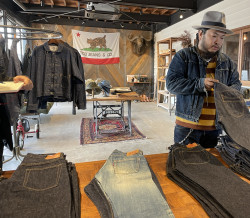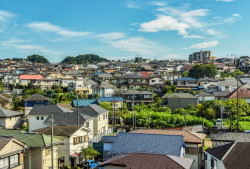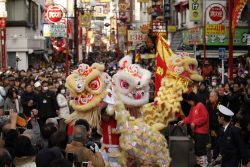
October 1, 2009
Tokyo Green Space
A bevy of local residents and organizations offer surprising visions for creating an urban forest
By Metropolis
The Fireflies of Shinagawa
In Japan, fireflies have a mythical cultural resonance. Besides providing the title for a chapter in the 1,000-year-old novel The Tale of Genji, they are associated with the folklore of hitodama, fiery apparitions of the souls of the recently dead that trick and beguile the living.
While it has become popular to raise fireflies in artificial environments, the summer insects thrive in the uniquely Japanese landscape called satoyama, a balance between people and nature created by thousands of years of rice farming. Distinct from wilderness, satoyama are crested in the concentric rings of villages, rice paddies and wild forest.
Professor Makoto Suzuki of the Tokyo University of Agriculture has recently begun a five-year effort to create such a habitat at Ono Gakuen Joshi Middle School in Shinagawa. He began his project by taking schoolchildren to the countryside to see fireflies in their natural environment and to experience how rice paddies were traditionally maintained and cultivated. His goal is to develop living connections between classroom and neighborhood, city and country.
“Even adults can’t understand that you can create a firefly habitat in an urban area,” Suzuki says. The Shinagawa school has the advantage of being located close to disused wells and waterways—including a stream that has been covered in concrete for decades. With a small grant from the Ministry of Education, Suzuki is working with the schoolchildren, parents, administrators, firefly habitat experts and a specialist from the Tokyo Four Seasons Hotel’s renowned firefly garden.
For more information, see www.nodai.ac.jp/english/index.html.
Citizen Gardeners

Photo by Jared Braiterman
From Tokyo’s humblest alleyways to its most upscale neighborhoods, local residents create gardens in small public spaces outside apartment buildings, shops and homes. Even a crack in the sidewalk can be a place to grow a flower.
These bursts of color and seasonality make walking in Tokyo much more pleasurable than it otherwise might be. Blurring the line between public and private spaces, gardeners create connections among themselves, their neighbors and the wildlife that their plants attract—butterflies, birds, dragonflies and ladybugs.
If you want to practice your Japanese and become a closer part of your community, just engage your local gardeners in the simplest of conversations. Complimenting a particular plant or the overall garden is certain to lead to many other topics. Before you know it, your new friends will interrupt their work to give you an “Okaeri nasai” in the evenings.
Once you’ve noted what grows well in your area, you might even find yourself tending plants on your balcony, in your hallway, or outside your building.







